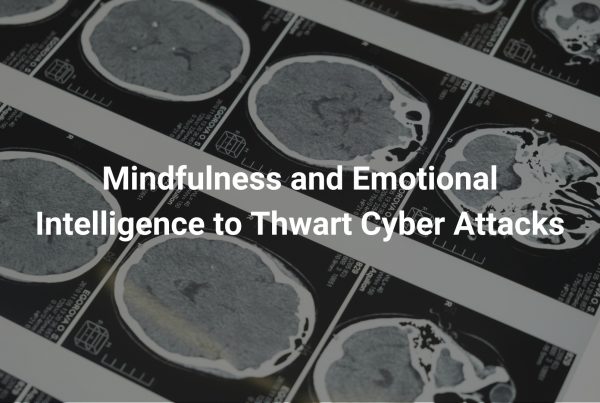WARNING
The following describes accounts of child sexual and physical abuse, which the Innocent Lives Foundation works to prevent. This blog contains content that some individuals may find disturbing or distressing in nature. Please be emotionally prepared before proceeding.
Names, locations, and other identifying information have been changed for the safety of the victims and the Innocent Lives Foundation team. Any similarity to actual names, living or dead, is purely coincidental.
Authors: Dr. Abbie Maroño
Published: May 20, 2024
Imagine being asked to sit with your emotions, truly sit with them. How long do you think you could sit still? Now, picture a mirror held up before you, reflecting back your insecurities, your deepest fears, and all those emotions you try to bury deep where they can’t hurt you. The instinct to turn away must be overwhelming. Now imagine you’re faced with two choices. The first is the path of least resistance: you could simply turn the mirror away, making those negative feelings someone else’s burden. The second choice isn’t quite so easy; it requires enduring the pain and discomfort. But behind the discomfort is the key to self-improvement and growth.
Which path would you choose? Many of us would like to believe we’re strong enough to embrace the challenge, yet, when confronted, it’s common to avert the mirror, projecting our discomfort outward.
Emotional projection is a term we often hear thrown around in conversations, self-help books, and even in popular media. But, as with many clinical terms that become popularized, the true implications on personal and interpersonal well-being can be undermined. At its core, emotional projection is a psychological defense mechanism that allows individuals to avoid direct confrontation with uncomfortable feelings about themselves. While projecting emotions onto others may offer temporary relief from negative self-perceptions, individuals who frequently engage in this behavior can become emotionally draining and a source of frustration for those around them.
To develop healthier emotional management strategies, we first need to understand why we project our emotions.
Why Do We Project Our Emotions?
When we project our emotions outwards, it enables us to avoid the internal discomfort associated with confronting our negative traits or emotions. Indeed, research in the field of psychoanalysis suggests that projection serves as a coping mechanism, allowing individuals to protect their self-esteem by denying the existence of these feelings within themselves and instead, seeing them in other people. In other words, it allows us to convince ourselves that it is the other person that is the issue, not us. This process of avoiding self-reflection usually happens unconsciously. In fact, one of the reasons that projection remains a widespread psychological behavior is closely tied to a lack of self-awareness. Indeed, it stems from a person’s difficulty in recognizing and accepting different parts of themselves.
Some individuals are more prone to projection than others, in particular, those with heightened insecurities. Insecurities often stem from a critical self-view or past experiences that have left individuals feeling vulnerable. Engaging in projection allows them to avoid confronting these painful feelings directly. Instead of acknowledging their flaws or shortcomings, they attribute these to others, thus avoiding the discomfort of self-reflection.
Ironically, while projection is used as a defense mechanism, it can also reinforce the individual’s negative self-image. The act of projecting may lead to interpersonal conflicts or validation of their feared inadequacies through the reactions of others, perpetuating the cycle of insecurity.
Breaking the cycle of habitually projecting is challenging because our thought patterns and actions become so ingrained and automatic that changing them feels like an impossible task. But a reluctance to break such a cycle will cause our relationships to become strained, unhealthy, and potentially break down.
How To Recognize When You’re Projecting
Recognizing when you are projecting your emotions is not a comfortable process, but addressing and altering these patterns can lead to better emotional balance and overall well-being.
Firstly, if you find yourself having an immediate, intense emotional reaction to someone else’s behavior could be a tell-tale sign of projection. If you find yourself overly irritated or judgmental towards certain traits in others, it might be worth exploring whether these could reflect aspects of yourself that you find difficult to accept.
It is also important to pay attention to patterns in your criticisms of others, especially if focused on specific traits or behaviors. If you frequently accuse others of being selfish, lazy, or any other negative trait, consider whether these could be traits you’re unwilling to acknowledge in yourself.
Feeling personally attacked by statements or actions not directly aimed at you can reveal underlying insecurities or guilt that you may be projecting onto the situation. Such feelings can often be rooted in unresolved personal issues or a deep-seated fear of being perceived in a negative light.
Finally, if you’re someone who tends to overthink, you might recognize this behavior. When you assume the motives or feelings of others without them explicitly saying so, it might indicate projection. This includes imagining how they might act or feel and then interacting with them as if these scenarios are true. This kind of projection not only skews our perception of others but also affects our interactions, leading to misunderstandings and conflicts. It’s as though we’re responding to a script we’ve written in our heads, attributing our internal narrative to those around us without considering their actual perspectives or intentions.
If reading this has made you recognize that you have a tendency to project your emotions onto others, please know that this is a common human experience. We are all works in progress, none of us are perfect. The true measure of emotional intelligence is in acknowledging these moments and making the necessary adjustments in our behavior.





